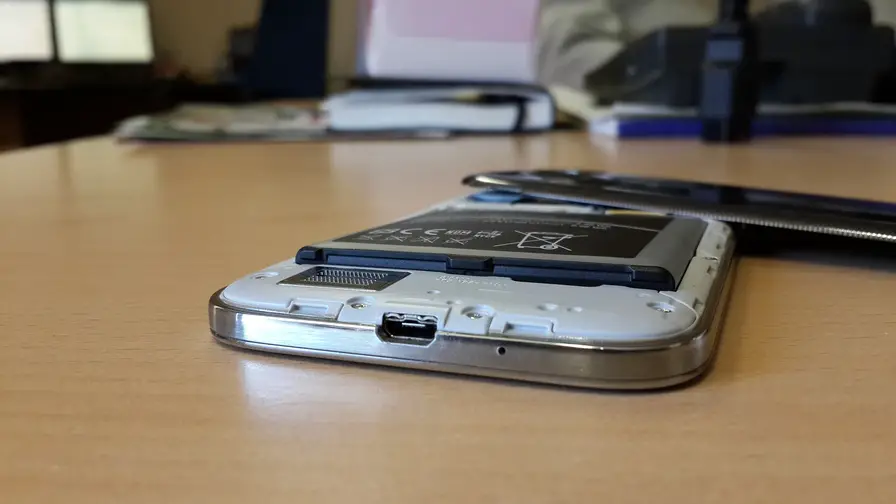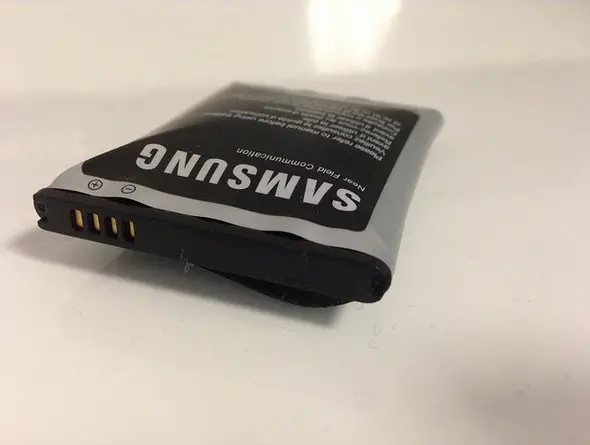Many of our everyday devices use lithium ion batteries and most of the time everything runs smoothly. But sometimes when a battery fails, it can become swollen, which can be dangerous. Here we learn about swollen batteries, how to deal with them, and how to prevent them in the first place.

Lithium Ion Batteries
Most of our modern portable devices such as cell phones, eReaders, fitness trackers, laptops, and tablets use lithium ion batteries. These batteries are ideal for these products because of their high energy density, small effect on memory, and low self-discharge.
The only drawback to these batteries is that they are less stable than other types due to the fact that lithium is a more reactive substance than other battery materials and the batteries are pressurized with a small amount of room between the cells and the outer cover.

Explanation of a Swollen Battery
When a lithium ion battery becomes old and fails, or when one is over charged or becomes too hot, there is a possibility of the battery cells emitting a mixture of flammable electrolytes.
This results is what is known as a swollen battery. The gasses are still contained within the battery, but cause it to swell and expand. This containment is a safety measure that prevents the battery from causing a fire.
You may notice a swollen battery by the way the cover fits over the battery compartment, or perhaps due to a gap between it. Depending upon the degree of swelling, some extreme cases may actually cause the battery to swell enough to actually tear open a trackpad or battery compartment door.
Keep in mind that while these situations do sometimes occur, for the most part, lithium ion batteries are actually pretty safe. They are designed with multiple safety measures that prevent them from over charging, have temperature gauges, etc.
In most cases these safety measures will and do work and prevent the battery from exploding and causing a fire hazard. However, if you should ever encounter a swollen battery, it is wise to know how to deal with it.
Read on to learn more about taking care of your gadget’s batteries and how to handle a swollen battery as well as preventing one.
Removal and Disposal of a Swollen Battery
A swollen battery needs to be treated and handled with care as there is a risk of explosion. First and foremost, once you discover a swollen battery, DO NOT attempt to charge the battery or use the device that it is in. Once the swelling has occurred, the safety measures of the battery will no longer be effective and charging or using a device could easily result in an explosion.
When trying to remove the battery, never make the situation worse by distressing the battery in any way. Don’t try to compress the battery in any way as this could result in a puncture which will cause the compounds inside to react with the oxygen and moisture in the environment.
On user-serviceable devices, if you can easily access and safely remove the swollen battery, then do so – you may wish to wear gloves to protect your hands.
Immediately upon removal, take some electrical tape and cover any exposed battery contacts with it. This will help prevent the terminals from touching anything that may short them out. Once removed, place the battery in a place that is cool and dry and away from anything flammable. Make plans to safely take the battery to a proper disposal facility.
For devices where you cannot service the product yourself, visit a battery shop, electronics service location, or an authorized battery recycling center. Someone there should have the proper tools and skills needed to remove the battery from the device.
If you are unable to immediately seek out a professional, leave the battery in the device for the time being, storing it in a cool and dry location away from any flammable materials.
Dispose of Lithium Ion Batteries at an Authorized Recycling Center
Never simply throw a lithium ion battery away even if it is brand new. They present an environmental hazard and should never be disposed of in a landfill.
There is also the possibility of an improperly discarded battery that could become short circuited or punctured in a sanitation truck, causing a fire or explosion and possible injury to the workers.
All new, used, or damaged lithium ion batteries that you wish to discard should be dropped off at an authorized recycling center. If you’re not sure where one is in your area, contact your city or county’s hazardous material disposal center to find out.
In cases of a swollen or damaged battery, call the facility ahead to let them know your situation and to make sure they have the ability to accept damaged batteries. NEVER dispose of a swollen battery in a general battery recycling bin like you might find at the local electronics store.
How to Prevent Your Batteries from Becoming Swollen
1. Keep it Cool
There are a few helpful tips for prevention of swollen batteries. These involve keeping the battery cool, using a quality charger, and replacement of old batteries that could be on the verge of failure. For example, never leave your phone, laptop, or other battery containing device inside your hot car on a summer day. Never charge your phone in a super hot location, such as a sunny window on a summer day, etc. When not in use, keep your devices in a cool and dry location.
2. Use Original/Official Charger
It’s tempting to use a knock off charger for your device to save money, however, using an “unofficial” charger not made for the specific product could compromise your battery. Official chargers contain the safety measures and quality components that help prevent loss, damage, or fires. The knock off may be cheaper, but could end up costing you more in the long run. The higher priced products specially designed for your device cost more because of the safety features and materials that go into them.
Read also: Are All Chargers and Devices Interchangeable?
3. When it’s About Time, Change it!
If you notice your phone, laptop, etc. is only getting a fraction of the battery life it once had, it may be time to replace it. This will ensure that you will not experience battery swelling or failure simply due to the age of the battery. Batteries degrade over time, and it is wise to seek a new one of your battery life has seriously diminished.
4. Stop Leaving Devices Plugged in All the Time
Batteries perform best and are at their safest when they are not over heated and not overly charged. There is no need to constantly charge your device or leave it plugged in. Over charging is not good for the battery and actually creates too much heat and decreases the life span of your battery.
Read also: Why Won’t My Phone Charge? 9 Common Reasons and Solutions!
Dealing with Swollen Batteries: Conclusion
While lithium ion batteries are generally very safe, sometimes they do malfunction and swell. Take great care upon removing a swollen battery from your device, and seek professional assistance if it is not something you can easily and safely do. Take good care of your batteries and treat them with respect so that they will provide you with hours and hours of use. When the time comes to dispose of the battery, do so only at an authorized facility.
[Images via: Google Images]
